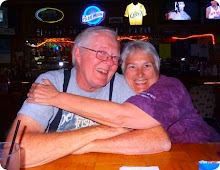
Forced to leave the State of Missouri by order of the governor, members of the Church of Jesus Christ of Latter Day Saints (commonly called Mormons or Latter Day Saints) began streaming into Illinois in the harsh winter of 1838-39. By the end of 1939 Joseph had been able to purchase much of the area of Commerce which was swamp land infested by malarial mosquitoes. The Saints were able to clear the land and make it habitable.
In 1840 the name of Commerce was changed to Nauvoo, a Hebrew word meaning "beautiful" . With Nauvoo's increasing size came more businesses, and before long it had become the largest business district north of St. Louis. By 1844, Nauvoo's population topped 10,000.
The Whig and Democratic political parties were joined in Hancock County by a third party, the Anti-Mormon Party. This group was determined to drive the Mormons from Illinois. Within days the county was on the verge of civil war. Joseph Smith, as mayor of Nauvoo, declared martial law within the city. When news of the situation reached Governor Thomas Ford , he immediately ordered out the state militia and went to Carthage to see the situation for himself. After reaching Carthage, Ford called for Smith and the Nauvoo City Council to surrender themselves to stand trial for the destruction of a printing press that had been destroyed by a mob in Nauvoo.
Under a promise of protection, Joseph Smith and a few of the council members surrendered themselves on 24 June. Three days later, with the governor gone to Nauvoo, a group of Warsaw militia stormed the county jail and killed Joseph Smith, his brother Hyrum, and wounded a third man, with a fourth man in the room escaping injury .
At the death of Joseph Smith the county was gripped in terror in fear of Mormon retaliation. Instead of retaliating, the City of Nauvoo was silent. The Anti-Mormon Party organized a series of raids against outlying Mormon settlements and by the summer of 1845 the hostilities had progressed to shooting on both sides. Governor Ford called out the State Militia to again quell the hostilities. This time the Mormons, now under the leadership of Brigham Young , agreed to leave the state and abandon Nauvoo the coming spring.
In February of 1846 word came to Brigham Young from Governor Ford that the United States Army might try to prevent the Mormon exodus from Nauvoo into Indian, British or Mexican territory. Fearing his people would be trapped, Young ordered many of the community's leaders to immediately evacuate the city. By September the town that had once been home to more than 20,000 people had been reduced to less than 2,000.
Two years after the Mormon expulsion from Nauvoo, their beloved temple was set ablaze by an arsonist. Two years after that a tornado toppled the north wall of the structure that had been weakened from the intense heat of the blaze. The Nauvoo City Council, fearing someone could be killed if the remainder collapsed, ordered the final demolition of the building in 1867.

Maybe I missed it, but what is the building in the photo?
ReplyDeleteMuch of historic Navoo has been rebuilt and there are living history programs there. I was pleased to learn Methodists were the group who welcomed the Saints since I grew up a Methodist in Illinois. My nephew and his mother are Saints living in central Illinois so it is good to know this once persecuted people somehow survived in the land of my childhood.
ReplyDelete